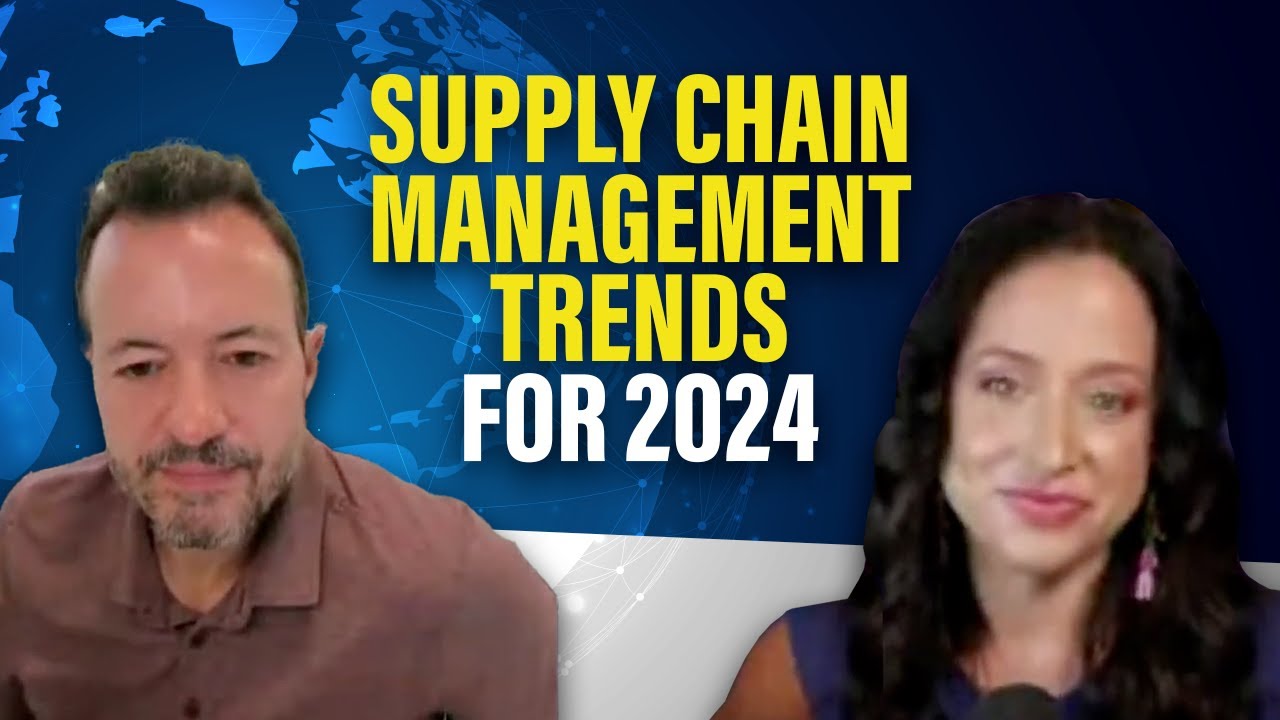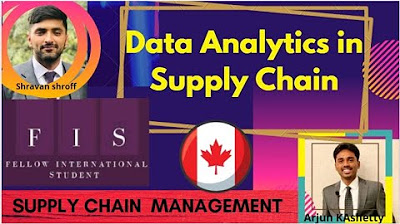Supply Chain Resilience During COVID 19 and Beyond
Summary
TLDR在这段对话中,两位忙碌的高管,分别来自Beckham Robotics和SVT Robotics,讨论了他们公司在机器人技术领域的工作以及如何帮助构建弹性供应链。Matt Tarrouka,作为Beckham Robotics的业务发展总监,负责构建合作伙伴生态系统和管理一些企业账户。TJ,作为SVT Robotics的销售和客户成功副总裁,负责增长和合作伙伴渠道的成功。他们讨论了Vechna Robotics的自主移动机器人(AMR)技术,这些技术以其灵活性和高可用性而闻名,以及如何通过AI基础的车队优化软件来提高操作效率。此外,他们还探讨了Softbot平台如何通过无代码环境快速连接到多个仓库管理系统(WMS),从而加快自动化部署并提高供应链的灵活性。他们还提到了Quick Start计划,这是一个快速部署自动化解决方案的方法,可以在几周内实现,而不是传统的数月规划。最后,他们强调了自动化在应对劳动力挑战、适应不断变化的电子商务需求以及实现供应链灵活性方面的重要性。
Takeaways
- 🤖 Beckham Robotics和SVT Robotics是两家专注于机器人技术的公司,分别由Matt和TJ领导,他们讨论了各自公司在供应链自动化方面的专长和解决方案。
- 🚀 Vector Robotics以其高容量自动移动机器人(AMR)闻名,这些机器人能够自适应路径,提供比传统自动车辆更高的灵活性和正常运行时间。
- 🧠 Vector Robotics还开发了基于AI的车队优化软件,能够实时评估操作中的所有活动,并能够即时做出调整,以优化整个车队的表现。
- 📈 由于COVID-19疫情,供应链的弹性变得尤为重要,企业开始寻求能够快速适应变化的自动化技术来增强其供应链。
- 📦 客户面临的挑战包括处理大量非传统货物(如皮划艇和家具),Vector Robotics提供的AMR解决方案能够同时拖运多件这类货物,提高电商设施的效率。
- 🔄 SVT Robotics的Softbot平台可以连接多个WMS系统,通过拖放式环境简化集成过程,使得自动化解决方案的部署更加快速和灵活。
- 📈 Softbot平台允许用户实时移动自动化设备到新的设施,并立即开始操作,这对于构建有弹性的供应链至关重要。
- 🚀 Quick Start计划允许快速部署硬件,通过软件配置,大大缩短了传统自动化车辆部署所需的时间和成本。
- 💰 通过Softbot平台和Vector Robotics的技术,企业可以在不进行大规模资本支出的情况下,通过操作性支出(OPEX)模型部署自动化。
- 🛠️ 部署自动化的挑战在于变更管理,确保操作人员接受培训并了解如何与自动化设备协同工作,以及如何优化流程以适应新技术。
- ⏰ 快速部署自动化的可能性已经实现,企业可以在几天内部署弹性供应链解决方案,而不需要长时间的规划和投资。
Q & A
贝克汉姆机器人公司(Beckham Robotics)和SVT机器人公司主要专注于什么领域?
-贝克汉姆机器人公司专注于开发高容量自动移动机器人,如自动叉车,而SVT机器人公司则提供软件平台,用于优化和连接多个仓库管理系统(WMS)和自动化设备。
Vector Robotics的自主叉车与传统自动化车辆相比有何不同?
-Vector Robotics的自主叉车能够适应其在设施中的导航路径,不局限于固定路线,这使得它们在使用上更加灵活,并且能够在更复杂的环境下运行,具有比传统自动化车辆更高的正常运行时间。
为什么在COVID-19大流行期间,构建弹性供应链变得尤为重要?
-COVID-19大流行加速了技术趋势,迫使企业必须携带更广泛的产品范围,并且需要不断重新配置制造工厂以适应快速的技术进步和市场需求变化。
如何通过Softbot平台实现快速部署自动化解决方案?
-Softbot平台允许用户通过拖放环境连接Pivotal解决方案到多个WMS,无需进行复杂的定制集成,从而实现快速部署。
在自动化实施过程中,为什么变更管理是关键?
-变更管理确保操作人员能够适应新的自动化流程,理解安全协议,并能够与自动化设备协同工作,这是成功实施自动化解决方案的关键因素。
如何通过Softbot平台优化自动化设备的行为?
-Softbot平台可以连接额外的输入,如WMS或其他设备,允许用户部署自动化解决方案,并根据需要优化整个网络。
为什么说Softbot平台和Vector Robotics的结合为制造和分销公司提供了强大的解决方案?
-Softbot平台和Vector Robotics的结合提供了快速部署、灵活性和优化自动化设备行为的能力,使得制造和分销公司能够快速适应市场变化,提高运营效率。
在自动化实施过程中,为什么安全性是首要考虑的因素?
-安全性是自动化实施过程中的首要任务,因为确保操作人员和设备的安全是任何自动化解决方案成功的关键。
如何通过Quick Start程序快速部署自动化硬件?
-Quick Start程序允许在几周内完成硬件的部署、培训和任务接收,大大缩短了传统上需要数月和大量工程资源的部署时间。
为什么说自动化可以提高设施的运营效率?
-自动化可以减少对人力资源的依赖,提高操作的一致性和可预测性,同时允许更快地适应新的工作流程和市场需求。
在后COVID-19时代,制造和分销公司面临的主要挑战是什么?
-主要挑战包括劳动力短缺、不断变化的市场需求和消费者期望,以及如何确保技术投资不会限制未来的灵活性和扩展性。
为什么说自动化解决方案的快速部署对于应对紧急情况(如疫苗分发)至关重要?
-快速部署的自动化解决方案可以在紧急情况下迅速提高物资处理能力,减少对人力资源的依赖,并确保关键物资能够及时、高效地分发给公众。
Outlines

This section is available to paid users only. Please upgrade to access this part.
Upgrade NowMindmap

This section is available to paid users only. Please upgrade to access this part.
Upgrade NowKeywords

This section is available to paid users only. Please upgrade to access this part.
Upgrade NowHighlights

This section is available to paid users only. Please upgrade to access this part.
Upgrade NowTranscripts

This section is available to paid users only. Please upgrade to access this part.
Upgrade NowBrowse More Related Video

Sustainable Supply Chain Pledge Day - Strategies that Improve Quality and Resilience

Supply Chain Management Trends for 2024 and Beyond

Data Analytics in Supply Chain Management Canada🍁 Tools to use🎒 Pay Range🚛Roles & Titles & Companies

Supply chain trends- What executive leaders expect in 2024

Supply Chain Leadership Across Africa: The Power of Local Solutions & Global Connections

Pieter Levels — The Indie Hacker’s Guide to AI Startups
5.0 / 5 (0 votes)
